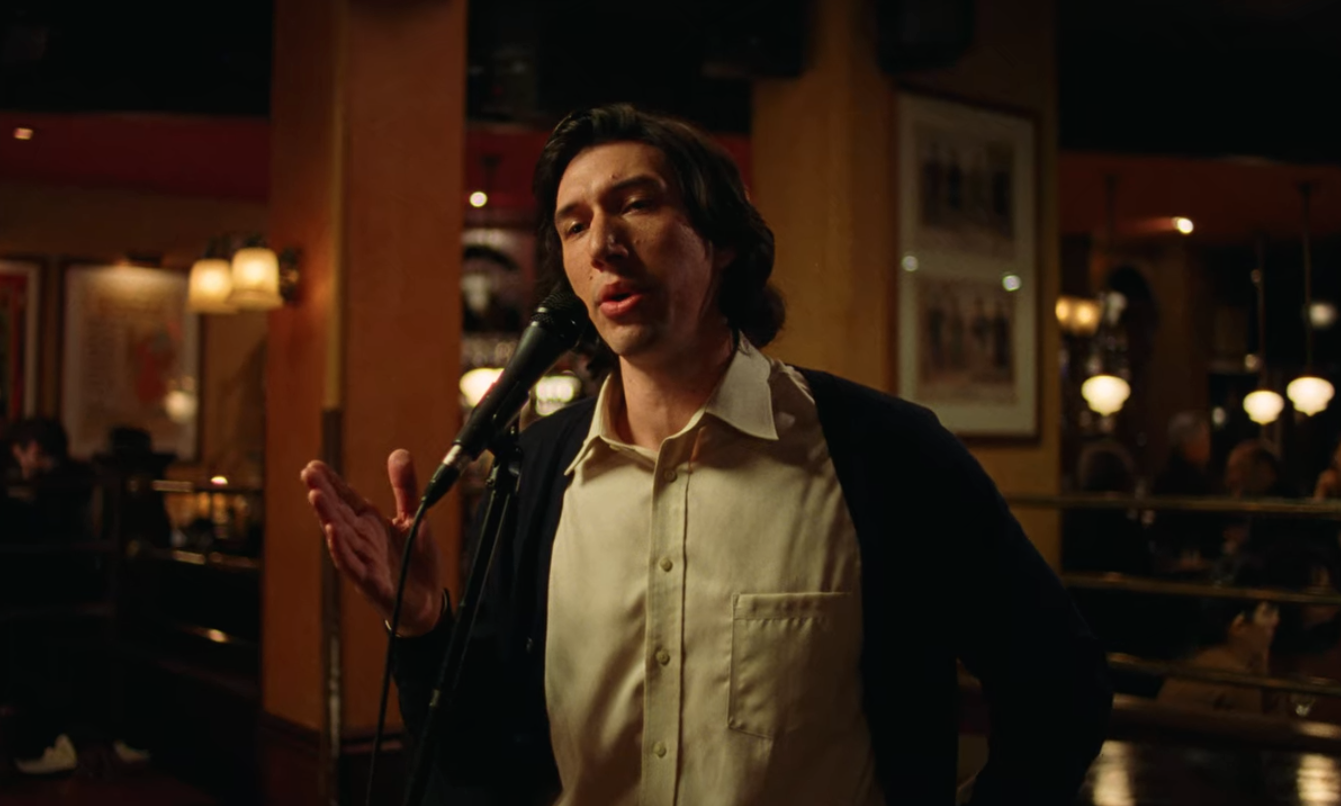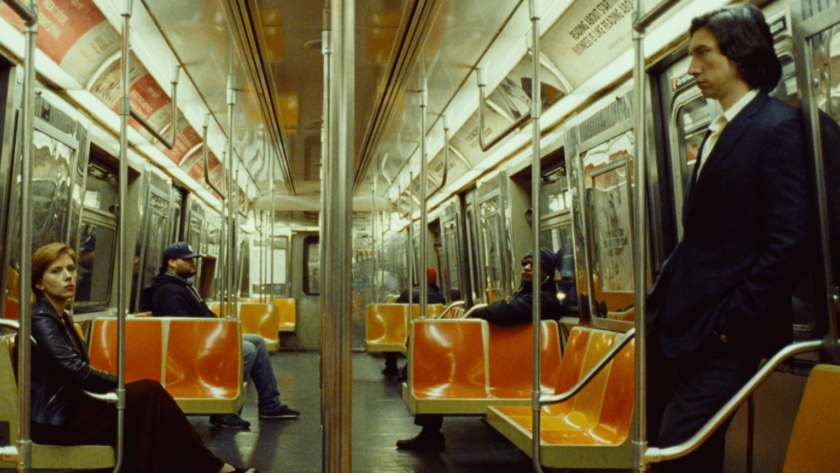Daniel Jacobson takes an in-depth look at Noah Baumbach’s tender drama Marriage Story through game theory.
One of the most famous and widely researched thought experiments in game theory, the field of mathematics dedicated to studying strategy and decision-making, is called the Prisoner’s Dilemma, and it goes something like this:
You and your friend are being charged with bank robbery. You are separately interrogated by the police, who offer each of you the opportunity to testify against the other, or to remain silent. If you both remain silent, you each receive 2 years in prison. If you both testify against each other, you each receive 5 years. However, if one betrays the other, whilst the other remains silent, the person who remained silent receives 10 years in prison, and the betrayer walks away free. What do you do?
From the outsider’s perspective, the optimal result in this scenario is for both parties to cooperate, as this results in the least amount of shared jail time. However, if you remain silent, you are guaranteed either the same amount (2 years) or more jail time (10 years) than your friend. In this way, whilst cooperation is the optimal outcome for the ‘team’, individually, it is in your interest to betray your friend.
As a romance story addict who is just beginning a PhD in computational genetics, I have developed a fairly potent obsession with the application of mathematics to a variety of messy, real-life situations including, more cynically, love and relationships. In fact, I wrote a movie about it (Calculating Nora, the 2019/20 Term 1 Film, is coming soon!). Whilst people have tried, there are serious limitations to applying game theory to relationships because, at its centre, game theory is about conflict, and relationships, ideally, are not. You can’t win at love. But you can win at divorce, and the quicker you realise this, the better chance you have of doing so. This is the problem at the centre of Marriage Story, and by asking what happens to a relationship when a conflict becomes all-encompassing, its writer and director Noah Baumbach has created, in my opinion, one of the funniest, most moving, most thought-provoking, and most human films of the decade.
Marriage Story portrays the divorce between Nicole (Scarlett Johansson) and Charlie (Adam Driver), from couples’ therapy, through the proceedings, up to the two of them moving on with their lives. Both parties clarify from the beginning that they want a fair, equal, agreeable separation, mostly with reference to their son, Henry, and whilst they both carry their share of mistakes, admittedly skewed towards Charlie, the divorce is the finale of the simple realisation that, with Nicole taking a job in California and Charlie staying with his theatre company in New York, their marriage has, unfortunately, run its course. Neither side is thrilled by this, but if they can both just get through their 2 years in prison, they can begin moving on in the healthiest way possible.
The movement away from cooperation and towards conflict is best represented by their respective lawyers. Nicole’s transition into conflict is fairly understandable as, at least initially, she is more likely to be cast as the “victim”, whose life and work has become entirely intertwined with Charlie’s. It is fuelled, however, by her lawyer Nora, played by the astonishing Laura Dern, who coaxes Nicole’s insecurities to the surface during their phenomenal initial meeting, in which Nora all but seduces Nicole into viewing her divorce as a zero-sum game – if one person benefits, the other person must lose out. And Nicole is entitled to win.
This is clearly more difficult for Charlie who continues to convince himself that, despite hiring Nora and playing for favours with their son, Nicole is still dedicated to securing an equal settlement. His first lawyer (Alan Alda) is older and more modest, and instantly connects with Charlie on his own familiar, personal grounds. However, Charlie is forced to hire his own hot shot lawyer (Ray Liotta) once it becomes abundantly clear that by choosing to act cooperatively, he risks losing custody of his son. In their first meeting, Liotta tells him “If we start from a position of reasonable, and they start from a position of crazy, by the time we settle we will be somewhere between reasonable and crazy. Which is crazy.” He knows that when one side has chosen conflict, the other’s only option is to fight back.
This is what I personally found the most heart-breaking about Marriage Story. As we are aware from the beautiful opening montages, Charlie and Nicole love each other. However, they are led to believe that they are fighting a battle when, in fact, if they had chosen to settle out of court and without lawyers, as initially discussed, their separation may have gone more smoothly.

There are two gorgeous scenes of serious conflict, in a movie where Charlie and Nicole are often apart. One, the film’s most notorious scene, portrays their initial attempt to come to an agreement themselves, culminating in searing words and a hole in Charlie’s wall, indicative of the equally upsetting Before Midnight. Whilst they have the best intentions, both sides are still too wrapped up in their lawyer’s opinions to work through it maturely. The second, my favourite scene in the film, shows their court case, in which Charlie and Nicole sit quietly whilst their sides are presented almost entirely by their lawyers. Here, every moment in the film is twisted and subverted into ammunition against the other: a drink at dinner is presented as alcoholism, a dedication to work as negligence. Unfortunately, their eventual attempts to seek greatest payoff are alluded to during the introductory scenes where, amongst the endless references to being good parents and dedicated spouses, their only shared trait is to be “competitive”.
Of course, the incredible depth of character generated throughout this movie is testament to Noah Baumbach’s unbelievable script, which presents conflict in a far more nuanced way than any film I have seen in a long time. Baumbach is a filmmaker to whom I have, admittedly, not dedicated sufficient time. I enjoyed the first 25 minutes of The Meyerowitz Stories, before deciding that the film was long and I wanted a sandwich and it was on Netflix anyway so I could continue watching later. Additionally, my 16-year-old-self described The Squid and the Whale as “sanctimonious drivel”, albeit without a clear definition of “sanctimonious”. Yet he redeemed himself by writing these unbelievable articles for the New Yorker.

The richness in story and character created by Baumbach’s script arises from his focus on a dozen or so scenes from the divorce, as opposed to providing every event in the story. Similar to films such as Boyhood, many essential events throughout their story – the termination of Charlie’s Broadway show; the success of Nicole’s television show; even the final settlement – are glossed over in passing. This allows for the film as a whole to breathe and play out organically. It means that the audience has the time to acknowledge and comprehend Charlie’s desperation as he takes Henry trick-or-treating late at night. Nicole’s frustration and nervousness before handing over the divorce papers is palpable and hilarious. And when Charlie delivers a full rendition of Sondheim’s “Being Alive”,it is not a thematic titbit played momentarily in the background, but rather an opportunity for Charlie, and us, to reflect emotionally and critically on what has occurred and consequently, what we have learnt.
Interestingly, there is a solution for optimising your winnings during multiple consecutive applications of the Prisoner’s Dilemma, known as the “iterated Prisoner’s Dilemma”. In a series of tournaments created by the political scientist Robert Axelrod, hundreds of algorithms were pitted against each other to see which methods optimised the results of these games. The most consistently successful technique, as reported in his 1984 book The Evolution of Cooperation, was known as “tit-for-tat”. Introduced by the mathematical psychologist Anatol Rapoport, the technique dictates that one should begin by cooperating with the other person and continue to do so until they choose to betray you, at which point you simply copy them. This does make some logical sense. By applying tit-for-tat, one is able to benefit whilst the other is cooperating and retaliate when betrayed. Tit-for-tat is, incidentally, the general response during real-life applications of the Prisoner’s dilemma, notably the “Live and let live” non-aggressive trench warfare behaviour during World War One.

However, a key characteristic of tit-for-tat is that whilst it was the most successful technique applied in Axelrod’s tournaments, a player applying tit-for-tat can only ever do as well as its competitor, but never better. Instead, it optimises its own results by optimising those of its opponent. This is possible because the Prisoner’s dilemma is not a zero-sum game. In Marriage Story, when Nicole plays as the provocateur by meeting Nora, Charlie utilises tit-for-tat. As neither side is able to cease betraying, for fear of insurmountable losses in court, they enter a “death spiral”. It is only their agreement to relax their demands and begin cooperating again that allows them to reach the fair settlement they intended for in the first place.
My absolute favourite films, such as Ferris Bueller’s Day Off, Little Miss Sunshine, and Marriage Story, have either influenced the way I choose to live now, or emulate what I would like to see in myself in the future. Whilst I might not be able to say the same for Kermack-McKendrick models, the Central Limit Theorem, or, indeed, the Prisoner’s Dilemma, I was struck by game theory’s ability to wholly encompass a story as emotionally harrowing and deeply personal as a divorce, without detracting from its nuances. You still can’t win at love, but it is naïve to suggest that conflict resolution and relationships exist independently. Whether we want to admit it or not, conflict is at the centre of all of our relationships and interactions, from family to flatmates, from loved ones to lecture buddies. I loved Marriage Story because, from my perspective, it presented a healthy method for dealing with these conflicts, one where seeking personal victories causes misery, and the choice to cooperate is beneficial both for the group and the individual. All it required was for Baumbach to put it so eloquently.






